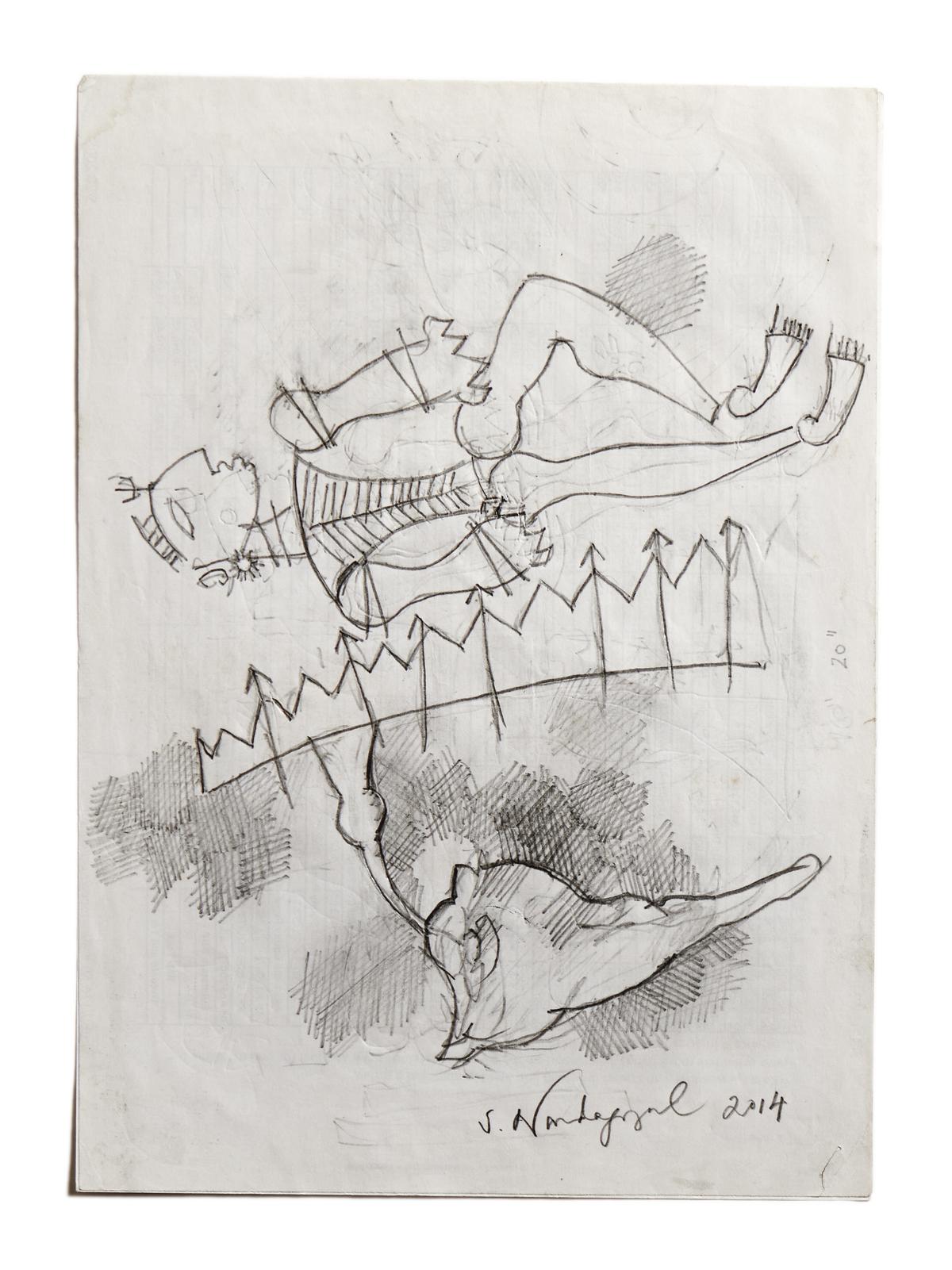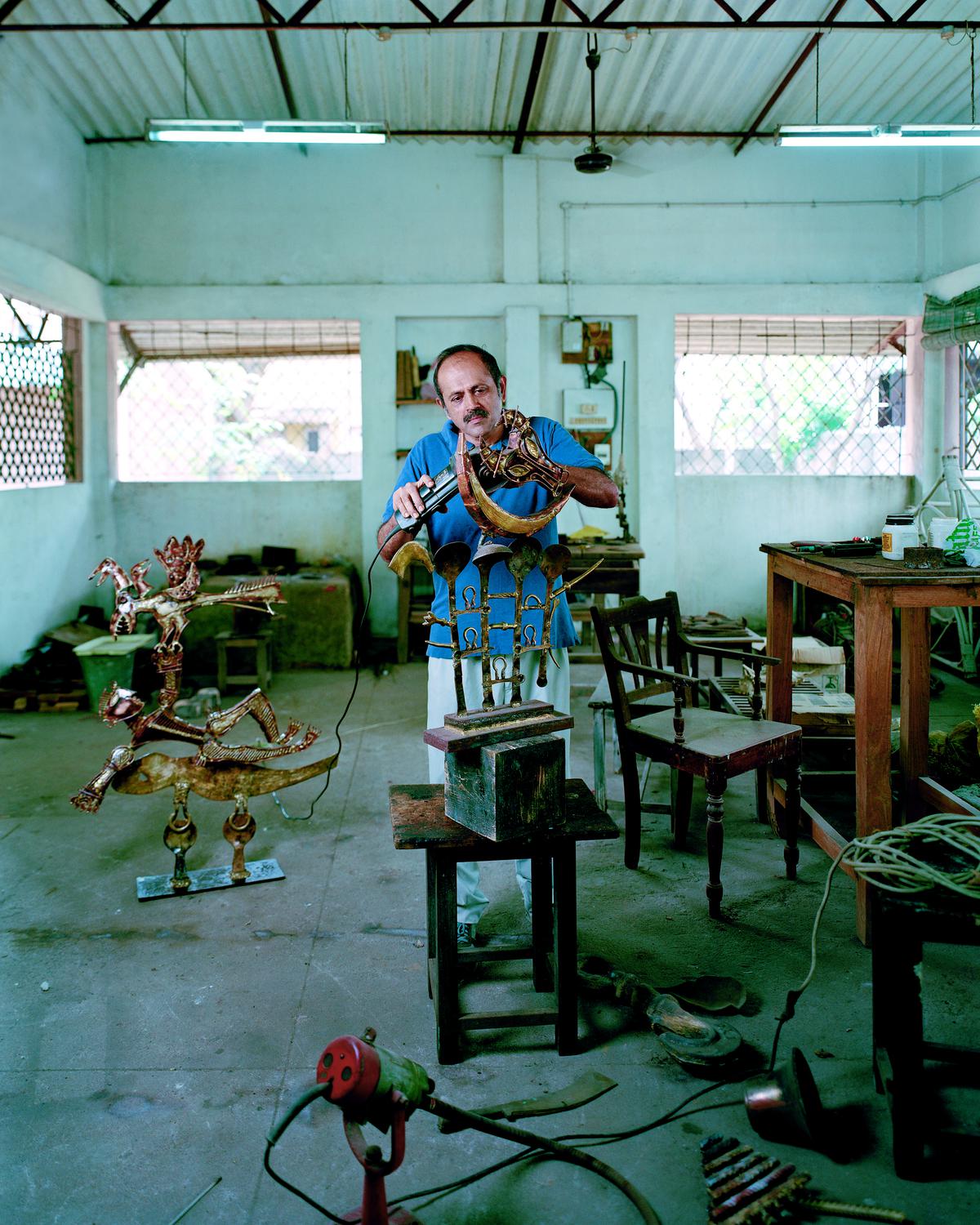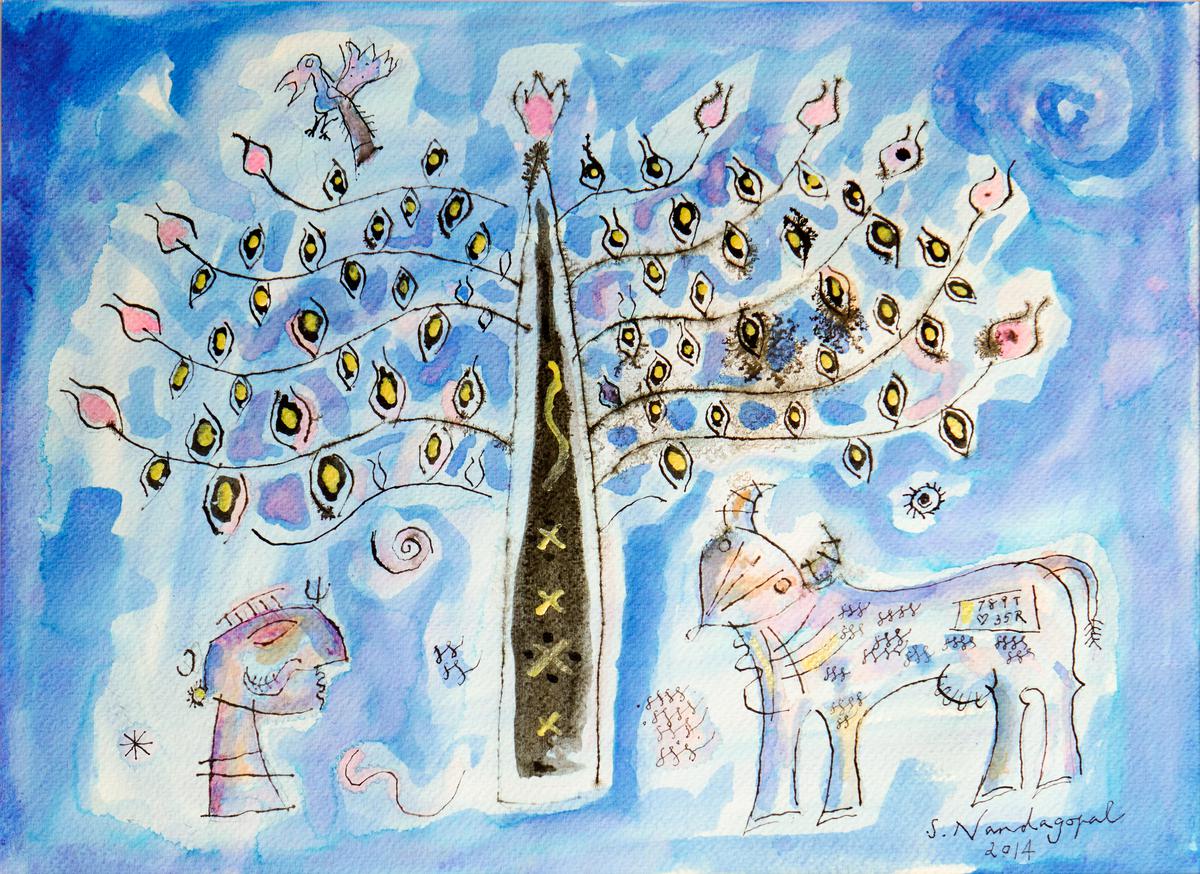Rough sketches on stray pieces of paper, notes detailing the structure of his next masterpiece: this retrospective on S Nandagopal opens a window into the artists’ psyche
Rough sketches on stray pieces of paper, notes detailing the structure of his next masterpiece: this retrospective on S Nandagopal opens a window into the artists’ psyche
Theirs was a “24/7 art house”.
Considering the legacy it proudly hosts — of seminal artist KCS Paniker, pioneer of the Madras Art Movement who founded Cholamandal Artists’ Village and his son S Nandagopal, one of the last custodians of the Movement —conversations about art were inevitable. And strewn on the dining table were spontaneous sketches and notes, sometimes hurriedly scribbled, on stray pieces of paper.
“The table was never clean!” Pallavi Nandagopal says, recalling her father stooped over the table, tracing the birth of an idea that would soon come to life in metal.
These sketches are a fascinating glimpse into S Nandagopal’s creative process: the artist broke ground in abstraction, using the medium of sculpture.
Now neatly framed, they are part of a “mini-retrospective” on Nandagopal’s fifth year of passing, at Focus Art Gallery.

Bhishma, the drawing
| Photo Credit: SPECIAL ARRANGEMENT
The collection, which shows his work from early 2000s till 2016, opens a window into the artists’ psyche, right at that moment an idea strikes.
Typical of the Madras Art Movement, Nandagopal had a strong base in drawing. “Sometimes, he would draw till the end of the sheet and realise there was no space. So he will take another piece, attach it and continue drawing,” says Pallavi.
The imperfections, tears, and haphazardly stuck-together pieces are all raw reminders of the amount of hard work that goes behind each finished piece of art.
Pallavi’s mother and the late artist’s wife Kala Nandagopal, adds, “For a long time, these were hidden away as personal pieces. Many of the earlier sketches were probably just thrown away.” Sharing them with the public, she says, is important since these sketches would have otherwise been forgotten, unlike the sculptures.

S Nandagopal at his workspace
| Photo Credit: SPECIAL ARRANGEMENT
As they were curating the sketches — there are 33 on display — they were able to connect many with finished sculptures: the display has 11 such sculptures placed in juxtaposition to the draft sketches. Bhishma, a mildly enameled sculpture that shows one of The Mahabharata’s pivotal characters reclining on the famed bed of arrows is an identifiable reproduction of the drawing signed in 2014.
Alongside this, are 20 watercolors done by the artist between 2014 and 2016. “During the peak summer months in Madras, we would encourage him not to get into the studio and work on sculptures. He would do watercolors, and drawing in those months, especially as he grew older,” says Pallavi.
Though he started off as a painter, Nandagopal’s admiration for seminal Indian sculptors like PV Janakiram and Dhanraj Bhagat, coupled with the desire to break away from his father’s mould and medium, steered him towards copper, brass and stainless steel. Elements reminiscent of South Indian mythology that feature in the work of artists part of the Movement, are seen here as well.
Kala reaffirms that he was not a particularly religious man. Yet, symbols and characters that he may have encountered in passing, often stayed fresh in his memory, and later manifested in his work. “Earlier sculptures were inspired by the Hero Stone and Sati Stone concepts,” says Kala.
His interest in literature, particularly of Earnest Hemingway’s work, reflects on his fishermen series, an ode to the literary giant’s Old Man and the Sea.

A watercolour work by Nandagopal done between 2014 and 2016
| Photo Credit: SPECIAL ARRANGEMENT
All his enameled sculptures, with hints of colour, are small in scale: “He often said that they were like jewels, almost,” says Pallavi. At the same time, sculptures that are big in scale (12ft to 23ft), are often simplified by the artist, making it more accessible for public spaces.
Photographs of Nandagopal alongside these monumental works are sprinkled through the narrative. The Mythic & The Magical, a 56-minute documentary that traces Nandagopal’s artistic journey through a delightful collage of rarely seen photographs from his youth, and accounts from art critics and journalists, will be screened on the opening days.
All the works are on sale. The show will be on from October 7 to 13, at Focus Art Gallery, Alwarpet. The film screening will be held on October 7 and 8.
For all the latest Entertainment News Click Here
For the latest news and updates, follow us on Google News.
